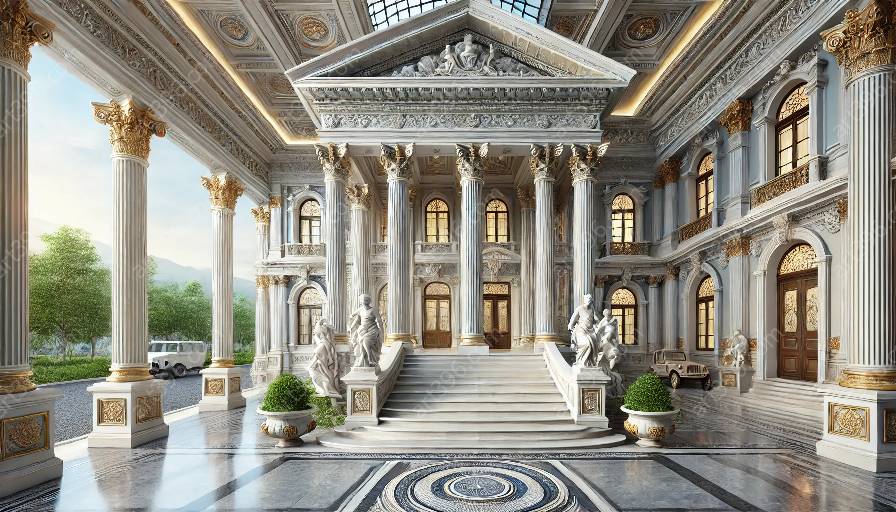The concept of public spaces in Neoclassical architecture holds a significant place in the cultural and architectural heritage. Neoclassical architecture, inspired by the classical forms and aesthetics of ancient Greek and Roman designs, sought to imbue public spaces with a sense of order, symmetry, and grandeur. This movement not only reshaped urban landscapes but also revolutionized the way communities interacted with their surroundings, fostering a deeper connection to their architectural identity.
Defining Neoclassical Architecture
Neoclassical architecture emerged in the mid-18th century as a revival of classical forms and principles. It sought to embody the timeless beauty and harmony found in the architectural styles of ancient Greece and Rome. The movement was characterized by grandeur, symmetry, and a focus on classical orders such as Doric, Ionic, and Corinthian. This emphasis on classicism and geometric precision extended to public spaces, shaping the urban environment in profound ways.
The Significance of Public Spaces
Public spaces in Neoclassical architecture were designed to evoke a sense of civic pride and communal belonging. The grandeur of public squares, civic buildings, and monumental structures served as a backdrop for public gatherings, social interactions, and civic events. These spaces were meticulously planned to facilitate a sense of awe and reverence, inviting individuals to engage with their surroundings in a meaningful way.
Impact on Communities
The design of public spaces in Neoclassical architecture greatly impacted the social fabric of communities. By creating monumental and orderly settings, it encouraged a sense of unity and shared identity among citizens. The deliberate placement of public buildings, statues, and fountains within these spaces fostered a collective appreciation for art, history, and civic values. Public spaces became vital gathering points where citizens could partake in cultural activities and civic discourse, strengthening the bonds that held their communities together.
Reflection of Architectural Identity
The emphasis on public spaces in Neoclassical architecture reflects a deep understanding of architectural identity. By integrating classical motifs, columns, and pediments into public buildings and urban designs, Neoclassical architects sought to convey a sense of continuity with the past while embodying the virtues of democracy, rationality, and civic responsibility. Public spaces served as a canvas for expressing the cultural and architectural values of the time, leaving a lasting imprint on the identity of cities and societies.
Legacy and Contemporary Interpretations
Today, the legacy of public spaces in Neoclassical architecture continues to inspire contemporary architects and urban planners. The enduring appeal of neoclassical public spaces lies in their ability to reconcile tradition with modernity, offering a timeless framework for creating urban environments that balance beauty, functionality, and cultural significance. Whether in the design of public squares, government buildings, or cultural institutions, the principles of Neoclassical architecture serve as a testament to the enduring power of public spaces in shaping the collective experience of communities.





























































